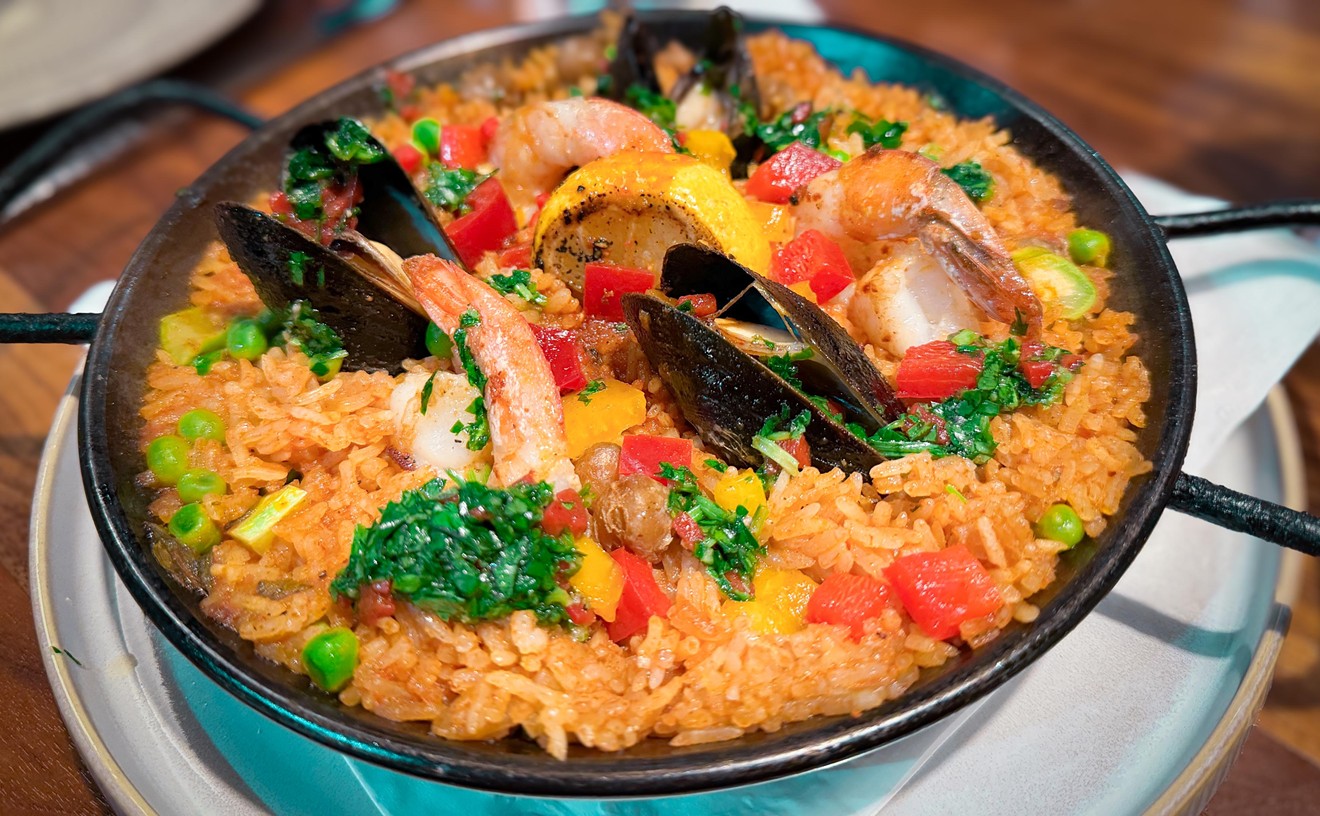After a couple of minutes, your dream bowl is imagined and you swipe your credit card. Then you're given an unfamiliar option: to complete the transaction using facial-recognition software.
You step closer to the point-of-sale system, and suddenly, you see yourself on the screen. Little yellow dots scan the topography of your face, and when it's finished, the POS system has registered not just the order but the face that made that order, so that when you return, you can order your favorite dishes with just one tap. At the new Malibu Poke, which opened this week in Turtle Creek Village, owner Jon Alexis and his business partners have spent serious money to integrate this new technology into their ordering system.
But why?
"It’s all about speed and getting through the line quickly," Alexis says. But speed is only part of the story.

Owner Jon Alexis uses his TJ's Seafood vendors to source sustainably fished seafood. Culinary director Matt McCallister helps keep the restaurant stocked with produce that comes from the local farms that fill his coffers at his Design District restaurant, FT33.
Beth Rankin
In the last few months, the poke wave seems to have crested. By all accounts, Malibu Poke is late to jump on the already overloaded bandwagon. But since announcing plans for Malibu Poke in April, Alexis has promised diners that this poke would be worth the wait.
So far, it seems that Alexis was right. He and his business partners, Shark Tank alumni Ben and Eric Kusin, tapped high-profile Dallas chef Matt McCallister, owner of upscale Design District restaurant FT33, to develop the menu. Along with the familiar poke bowl ingredients like wasabi aioli and edamame, you'll find less expected components such as bonito flakes (bits of dried, smoked bonito fish), arare (a tiny, ball-shaped Japanese cracker) and micro greens sourced from the local farms McCallister employs at FT33.
As with any poke spot, you can build your own bowls, but you'd be remiss if you didn't try one of McCallister's creations, some of which feel almost like a bite from FT33 served in a sunlit fast-casual lunch spot. It's not the cheapest lunch option in town — poke rarely is — but when it comes to raw fish, cheap isn't exactly a selling point.

The bonito aioli tuna bowl ($12 for small, $16.50 for large) is packed with serrano pepper, bonito flakes, micro basil, avocado, toasted coconut, crispy garlic, sushi rice and fresh raw tuna.
Beth Rankin
"People are having fun doing it," he says. "I’m surprised by how many people are doing it."
Malibu Poke hasn't been open long enough to have too many regulars, but Alexis has found repeat customers using facial recognition to reorder their favorite creations. It helps, too, that in the last several months, facial-recognition software has hit the mainstream with Apple's announcement that the tech giant is moving away from thumbprint-scanning technology and using facial recognition as a security measure on its latest generation of phones. When Alexis was searching for the right point-of-sale system for Malibu Poke, he came across the facial-recognition option and decided to give it a try.
"What’s really good for us is that the new iPhone has that technology," he says. "Now it's not gimmicky; this is real."
Most fast-casual restaurants use electronic kiosks to cut down on labor costs, but Alexis stations employees at the kiosks to answer customer questions and help with the ordering process.
"We’re not doing it in lieu of human interaction," Alexis says. "We’re supplementing it so you have the best of both worlds."
He hopes that the technology will yield greater accuracy. "What’s the point of customization if it doesn’t work?" he says. "The computer can’t mess your order up."

The wasabi ponzu salmon bowl ($12 for small, $16.50 for large) is made with orange, daikon, wasabi tobiko, wasabi aioli, edamame, scallion, micro radish, arare and raw salmon.
Beth Rankin
"We literally tested that," Alexis says. "We were not gonna turn it on if it had that issue."
In the age of regular data breaches that compromise consumers' credit card information, Alexis also wondered if customers would have security concerns. But he says the system he uses has built-in security features that prevent him from accessing either scanned faces or email addresses that consumers can input instead.
"We have no access to either the photo or email," he says. "I literally would not know how to find it if I wanted to. If you want extra cucumbers, that's between you and the machine."
In the end, implementing the technology was a risk with, frankly, not that big of a payoff — it may cut down wait times by a few seconds per customer or draw in a few customers who are intrigued by the technology. But if it doesn't work, "if that ruins people’s experience," Alexis says, "we become the place with the janky computer system."

The spicy chile tuna bowl ($11 for small, $16 for large) comes packed with marinated cucumbers, serrano chile, red onion, micro radish, chili oil, red chili thread, crispy shallot and raw Ahi tuna.
Beth Rankin
It's not exactly groundbreaking, restaurant industry-disrupting technology, but if the iPhone X has taught us anything, it's that we can expect this technology to become an increasingly larger part of our consumer experiences.
"It’s not just a gimmick; people actually see the value," Alexis says. "It’s a vote of confidence in the technology. And people are having so much fun with it."
Malibu Poke, 3888 Oak Lawn Ave. Open 11 a.m. to 9 p.m. daily.












